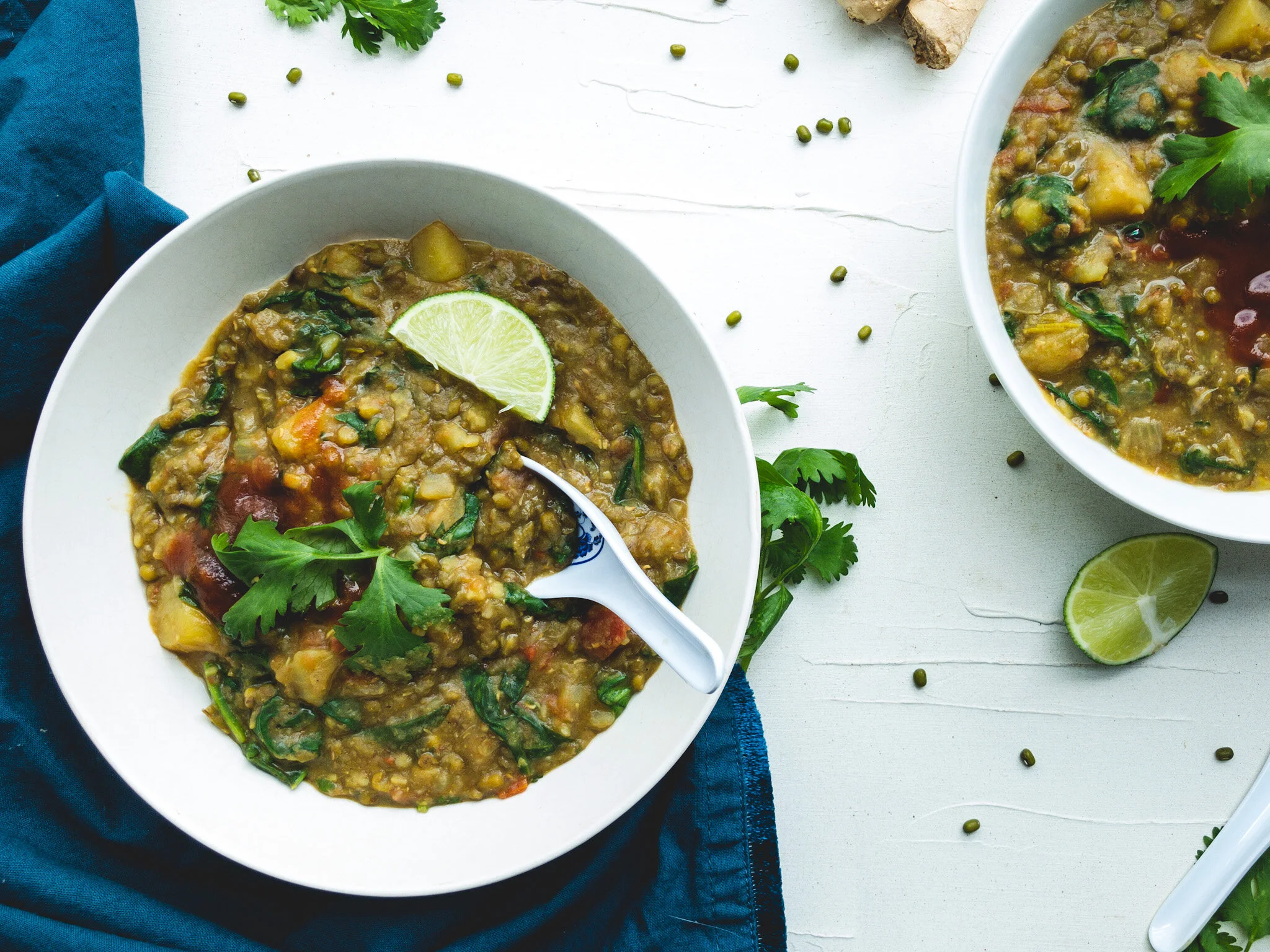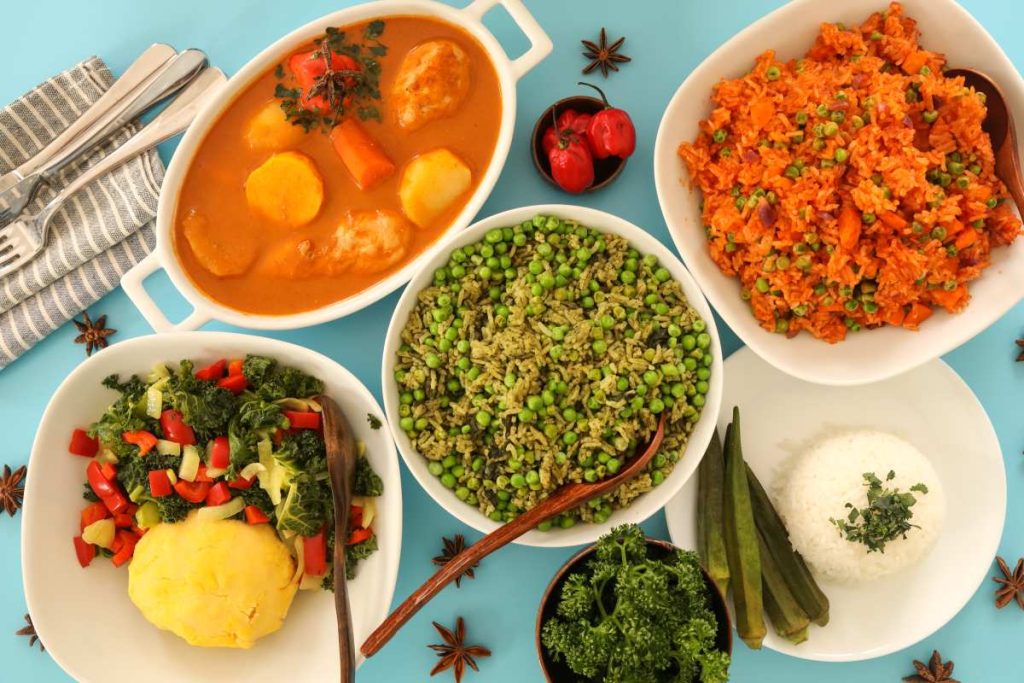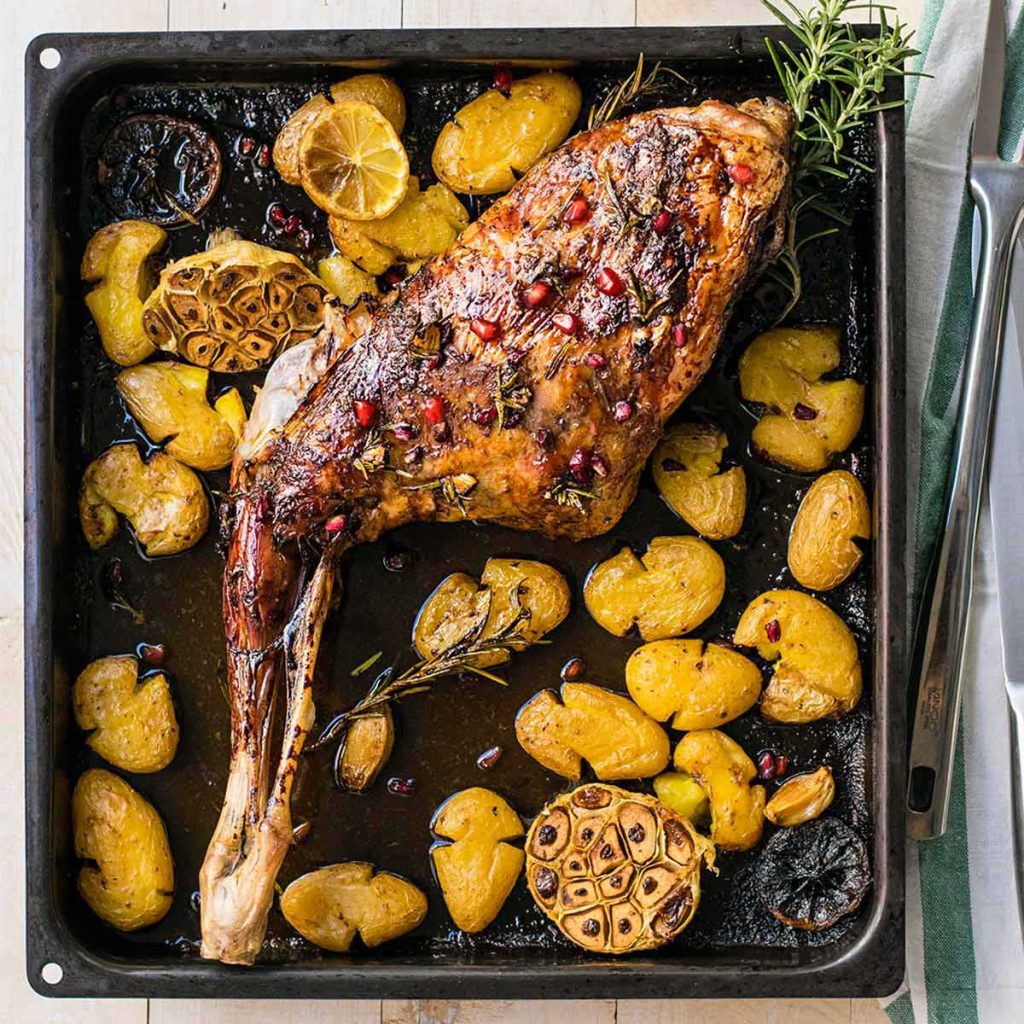Our Mung Bean Curry recipe is so flavorful! It is a great alternative to a meat curry dish, but it still contains healthy vegetable protein and fiber. Mung beans, also known as Choroko in Swahili, are native to parts of East Asia, and were brought to Africa from India, where it is an important source of protein for their vegetarian diets. You can purchase green or brown mung beans in most health food supermarkets. The main variety used in East African cooking is the green variety.
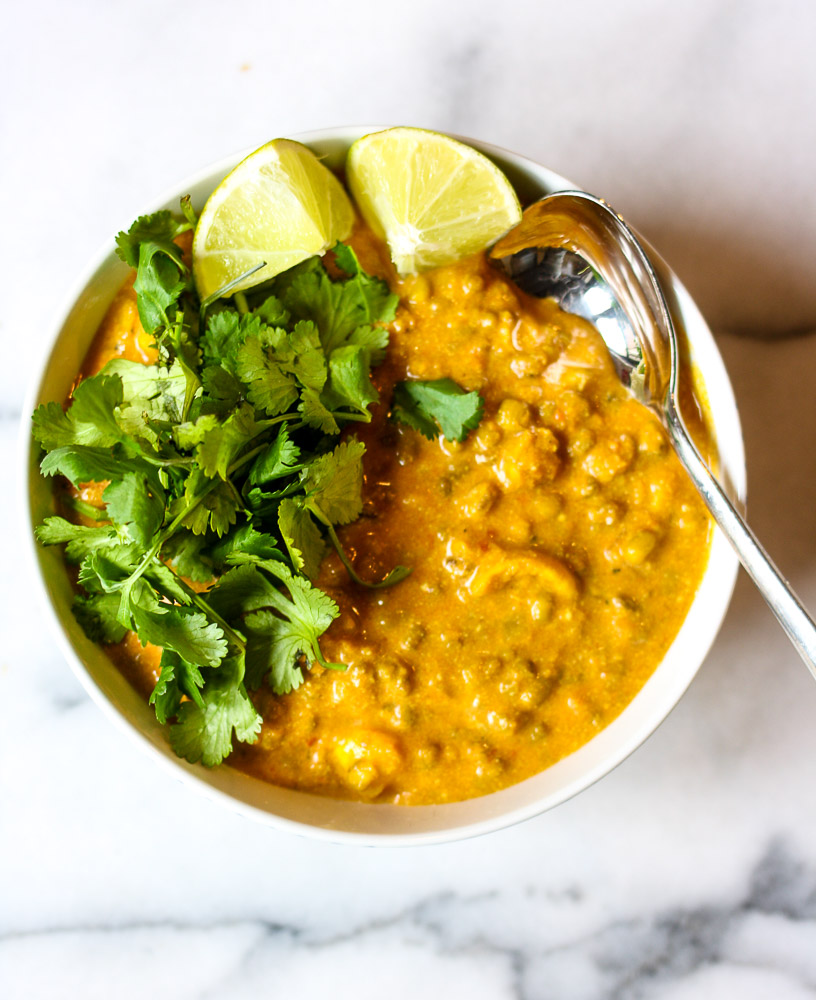
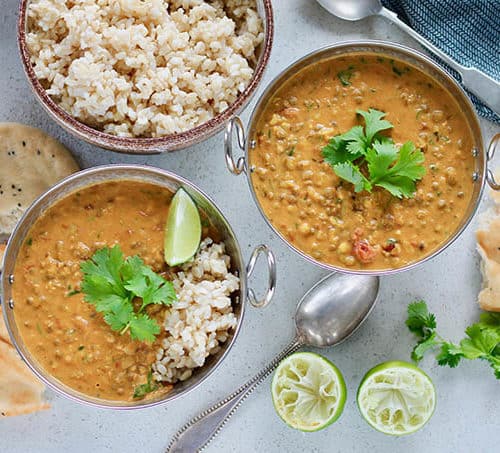
MUNG BEAN CURRY
Equipment
- 1 pan
- 1 stove
Ingredients
- 2 cups dried mung beans
- 2 tbsp olive oil
- 1 large yellow/red onion, diced
- 2 cloves fresh garlic cloves, minced
- 1 tbsp grated ginger
- 1 tsp jalapeno pepper, diced (optional)
- 2 tsp curry powder
- 1 tbsp cumin seeds, crushed
- 1 cup diced/crushed tomatoes
- ½ tsp sugar
- 1 tbsp ketchup
- 1 tsp soy sauce
- salt and pepper to taste
Instructions
- Put Mung Beans and 4 cups of cold water in a pot and bring to a boil.
- Turn down to simmer and cook for about 40 minutes or until water has evaporated.
- Heat a large pan on medium heat.
- Add olive oil and onions and cook until soft before adding garlic, ginger, and jalapeno pepper and cook for about 1 minute.
- Next add spices and stir for another minute to prevent it from sticking.
- Put in the cooked mung beans and cook for a couple of minutes before adding tomatoes.
- Bring to a slight boil and then turn down to simmer and cook for about 20 minutes or longer if you desire.
- Remove from heat and set aside until ready to serve.
Video
Notes
Nutritional ingredients of MUNG BEAN CURRY
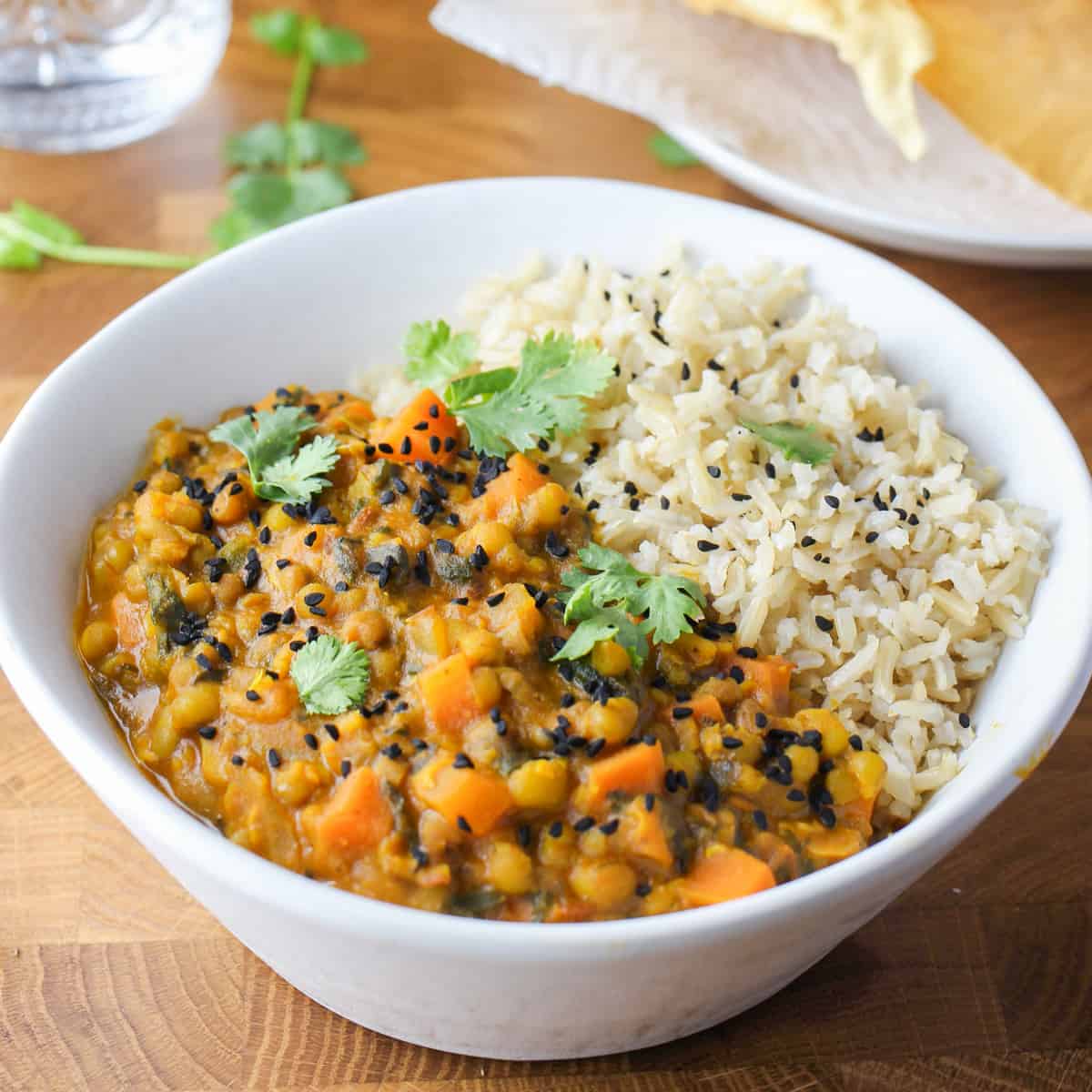
The nutritional content of Mung Bean Curry can vary based on the specific recipe, serving size, and ingredients used. Here’s a general overview of the nutritional components you might find in a typical serving of Mung Bean Curry:
Nutritional Information (approximate values per serving of Mung Bean Curry):
- Calories: Around 150-250 kcal (depending on portion size and ingredients)
- Carbohydrates: Approximately 25-40 grams
- Protein: Roughly 8-15 grams
- Total Fat: Around 3-8 grams
- Saturated Fat: Varies based on the cooking method and added fats
- Dietary Fiber: Roughly 5-10 grams
- Sodium: Approximately 300-700 mg (varies based on added salt and ingredients)
- Vitamins and Minerals: Mung Bean Curry is a good source of various vitamins and minerals, including folate, iron, magnesium, and B vitamins.
The nutritional profile of Mung Bean Curry is largely influenced by the mung beans themselves, which are high in plant-based protein and dietary fiber. The spices and additional ingredients used in the curry can also contribute to its nutritional value.
Mung Bean Curry is often considered a healthful option due to its protein, fiber, and nutrient content. The combination of mung beans and spices provides a satisfying and nourishing meal that can be part of a balanced diet.
Tips and tricks
- Pre-soaking Mung Beans: Soak the mung beans for a few hours or overnight before cooking. This reduces cooking time and improves their texture. Drain and rinse the soaked beans before using.
- Spice Blending: Create a balanced spice blend with cumin, coriander, turmeric, and other spices that complement the dish. Toasting whole spices and grinding them fresh can enhance the flavor.
- Aromatics: Begin by sautéing aromatic ingredients like onions, garlic, and ginger. These form the base of the curry and infuse it with flavor.
- Cooking Liquids: Use a combination of water, broth, or coconut milk as the cooking liquid. The choice depends on the desired richness and flavor profile.
- Texture Control: For a creamy texture, partially mash some of the cooked mung beans with the back of a spoon. This adds thickness and body to the curry.
- Vegetable Additions: Enhance the nutritional value and flavor by adding vegetables such as tomatoes, spinach, carrots, or bell peppers.
- Acid Balance: Add a touch of acidity with tomatoes, lemon juice, or tamarind paste. This helps balance the flavors and brightens the dish.
- Cooking Time: Simmer the curry gently over low to medium heat to allow the flavors to develop and the mung beans to become tender.
- Garnishes: Elevate the presentation and taste by garnishing with fresh herbs like cilantro, mint, or parsley just before serving.
- Coconut Milk Enhancement: If using coconut milk, add it toward the end of cooking to prevent curdling and to preserve its creamy texture.
FAQs of Mung Bean Curry
![Whole Mung Bean Curry [Vegan, Gluten-Free] - One Green Planet](https://african-food-recipes.com/wp-content/uploads/2023/08/http-www-african-food-recipes-com-mung-bean-curry-html-2.jpg)
- What are mung beans, and why are they used in curry? Mung beans are small, green legumes commonly used in various cuisines. They are rich in protein, fiber, vitamins, and minerals. Mung beans are used in curry for their nutritional value and ability to absorb flavors, creating a hearty and nourishing dish.
- Can I use canned mung beans for the curry? While canned mung beans are convenient, using dried mung beans that you soak and cook yourself is preferable. Canned beans might be softer and lose some texture during cooking. If using canned mung beans, adjust the cooking time accordingly.
- Can I make Mung Bean Curry without using spices? Spices are a significant component of Mung Bean Curry, contributing to its flavor profile. However, you can adjust the spice levels according to your preference. A mild version of the curry can still be delicious with a balanced blend of other seasonings.
- Is Mung Bean Curry suitable for a vegetarian or vegan diet? Yes, Mung Bean Curry is an excellent option for both vegetarian and vegan diets. It provides plant-based protein and is often made without animal products.
- How can I make Mung Bean Curry less spicy? To make the curry less spicy, reduce or omit hot peppers, chili powder, or other spicy ingredients. You can also balance the heat with the addition of yogurt, coconut milk, or a touch of sweetness.
- Can I freeze Mung Bean Curry for later consumption? Yes, Mung Bean Curry can be frozen. Allow the curry to cool completely before transferring it to airtight containers or freezer bags. Thaw in the refrigerator and reheat gently on the stovetop.
- Can I use other types of beans or lentils in place of mung beans?While mung beans are traditional, you can experiment with other legumes like lentils, chickpeas, or kidney beans. Keep in mind that cooking times may vary, so adjust accordingly.
- What can I serve with Mung Bean Curry? Mung Bean Curry pairs well with rice, flatbreads like naan or roti, and even quinoa. Accompany it with yogurt, chutney, or pickles for a complete meal.
- Can I add vegetables to Mung Bean Curry?Absolutely. Adding vegetables like spinach, tomatoes, carrots, or bell peppers can enhance both the flavor and nutritional value of the curry.
As the aroma of spices lingers and the flavors meld, a bowl of Mung Bean Curry emerges as a testament to the beauty of wholesome cooking. With each spoonful, the tender mung beans, infused with the warmth of spices, transport you to a realm of comfort and nourishment. Mung Bean Curry, a culinary masterpiece, not only satisfies the palate but also speaks of tradition, healthfulness, and the joy of savoring a bowl of goodness.

